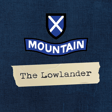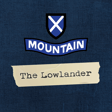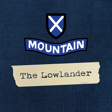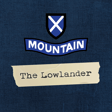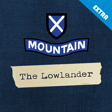Become a Creator today!Start creating today - Share your story with the world!
Start for free
00:00:00
00:00:01

THE LOWLANDER - THE LAST STAND
Foxholes! Passports! Currywurst! In our final episode, we look at Walking with The Jocks - the battlefield tour we're taking to the Roer Triangle, this October 24, following in the footsteps of the 52nd Lowland Division. Thanks for listening, we hope you've enjoyed every episode as much as we have...
Recommended
Transcript
The Journey Begins: Snacks and Passports
00:00:02
Speaker
Hello, Erin. Hello, Andy. First question, have we got snacks? Have we got passports is the first question. No, no, no. OK, right. Have we got snacks? Have we got passports? Yes, we have. Let's go. Let's get. Passport and security call. Have your passports open and ready.
Travel to Sittard and Evening Plans
00:00:23
Speaker
Hello. Hi there.
00:00:26
Speaker
Germany and Netherlands. We're going to get to Sittard and the Netherlands tonight. Thank you very much. Cheers mate. I can't promise that.
00:00:52
Speaker
Hello, Andy. Hello, Marian. Hello,
Introduction to The Lowlander Tour
00:00:54
Speaker
hello. Welcome to the very last edition of The Lowlander and you join us as we are going to go walking with the jocks. Yeah, we went to Netherlands and Germany a couple of months ago now and we thought it'd be a good idea just to record the kind of stuff that we look at getting ready for the tour that we're doing in October 2024. We're going walking with the jocks and we're following in the footsteps of Peter White, the King's Own Scottish Borders and the men of the 52nd Lowlander Vision.
00:01:20
Speaker
Yeah, so what we thought we'd do is we'd just give you a taste of what it's going to be like. So as we visit Vallfreicht, Tripshat, Konigsbosch and the Klosterhof, all those places you've heard us talk about over the last few months.
00:01:31
Speaker
Yeah, you can think of this as a lightning quick audio tour if you like.
Tour Itinerary Overview
00:01:35
Speaker
We'll be getting together just outside Dover on the Friday. That's a few hours drive from there to Sitard on the German border with the Netherlands. And then we'll dive straight in and get to know some of the men who made the ultimate sacrifice during the period between October 1944 and May 1945 during the Second World War. And that'll include youngsters like young Dennis Denini, VC.
00:01:56
Speaker
Yeah, and Sitard is a great place for us to get some context about where they're fighting, what took place here after Arnhem in Operation Market Garden. So the Roar Triangle was of course the area which your 52nd lowland division fought in Operation Blackcock. So we'll be hearing about Veritable and Plunder too, and much the same way we've been following Peter White's footsteps through the weekly episodes of
Audio Tour of Tripsrat Woods
00:02:16
Speaker
the Lowlander. So where else are we going there in?
00:02:18
Speaker
Well, from Sitard, it's only a couple of kilometers up the road to Linde and Stein. And from there, we're going to go to Königsbosch and to Waldfeucht, where we'll be looking at how Peter White and his platoon took out a tiger tank with a piet. From there, where do we go? Klosterhof Farm. Then just before going back to Sitard, we'll go up to Tripsrat Woods. Well, and actually, what we're going to do now is we're actually going to take you on a kind of virtual audio tour of Tripsrat Woods.
00:02:50
Speaker
I forgot my walking stick again, didn't I? Where are we now, Maren? We are in Tripsrat. Tripsrat. Which is the small village between Gallenkirk and Hainesburg. And we've parked at the church. Take in Major Spang on the left hand side. And we're looking east towards the Hovabosh or Tripsrat Woods as recorded and with the jocks. Spang. Spangers and mashes we see. Aye.
00:03:21
Speaker
That's a big, that's a big bit of spag. That's a big tank shell firing through that building there. That far out bit is actually Spandau corner. So we'll walk up to there. What a front line. Yeah.
00:03:43
Speaker
And to our right we have the cluster of buildings. Which is called Hochid. That's it. Which is regimental headquarters at the southern tip of the gap between Hovebosch, Tripshark Woods and Tripshark. And we're going past the duck pond. Bomb crater.
00:04:01
Speaker
It's not a bomb crater. It never has been a bomb crater. The only person in the world that thinks it's a bomb crater is you. But we are basically next to the site of the mine accident. 2400 mines went off. Well, 2300 mines went off.
Mine Explosion Tragedy
00:04:25
Speaker
War Diary, 4th Battalion of the King's Own Scottish Borders, 7th January 1945, Hochheid. 1550 Hours. Unknown cause exploded near all of 75 grenades, 2,400 in total, 32 sappers killed, 17 of our own personnel. All of this, total recognisable part of only 14 bodies were eventually found.
00:04:50
Speaker
Among those killed were five batmen including the CO's piper, the CO's bodyguard and his brain gunner. Damage was caused to battalion headquarters, support headquarters buildings which were little more than a hundred yards away. Chief Royal Engineer and Commanding Officer were only a hundred yards from the explosion but were able to take cover from a ditch.
00:05:20
Speaker
Two dogs. We'll get a good Morgan in here. You're representing the United Kingdom here. Remember. Of course the um, the Geebers are excited. Morgan! Good Morgan.
00:05:48
Speaker
The Retriever was just desperate for some love and the other one stopped
A Woodpecker Adds Atmosphere
00:05:52
Speaker
it. You just please love me. So shall I try my best Claire Balding here? Not many people get the Claire Balding reference. Who's a little Claire Balding at the horse racing lady? No, rambling.
00:06:16
Speaker
Six o'clock in the morning, five o'clock in the morning, whenever it is, you can't sleep. We're approaching the front line, the western side? Yeah. Of? The hover-bosh, which is known as, well, it's known by the jocks as trip-shrap woods. However,
00:06:40
Speaker
There's another trip track woods, which is over the other side, the far western side of trip track, which is actually Dorset woods. And that's where people think that Peter was, but actually he was here in the hover bush. There's a range of trees that runs south to north about two kilometres. Yeah, two, two kilometres. We're going to turn left to work our way up north along the western side. Yeah.
00:07:15
Speaker
Yeah, yeah. So that's C company positions. So can we have a look at that trench there? Yeah. So Marin has spotted the C company positions. C company of the 4th Battalion of the Kingdom and Scottish Borders, who were the rear right company of the 4th Battalion.
00:07:35
Speaker
And these are really well marked trenches and foxholes. There's no doubt. There's absolutely no doubt that that is a trench. Scrapes. It's actually probably two metres in length by about one and a half metres wide.
00:07:56
Speaker
And there's absolutely no debate here because we're not looking at fur forests, so there's never a debate here about whether or not it's the scrape that's created when a fur uplifts a shallow root bed. No. Which sometimes you can get. Yeah. I mean, if we go over towards Gros Arstorf, there's a stretch of woods there where you have to look twice and go, is that a tree that's been downed in the last sort of five to 10 years, or is that a proper foxhole?
00:08:25
Speaker
I mean I've only ever seen one fox all in that ridge, a couple of foot well. We can see as well here, just to our right, we're walking up the west hand side of the woods now, we can see the outline of trenches.
00:08:40
Speaker
And that, they are... Connecting all the foxholes together. Well, if you see that bit there, those beach trees are probably about 15, 20 years old. Yeah. So the woods are constantly managed, but actually you can still see where the trenches are. Yes. And they overlook the gap between trips like woods and the village of Tripsrat, where the remainder of the battalion where I saw A company and D company were in the actual village.
00:09:09
Speaker
Yeah. I'm just going to dive off the track now into the woods. About. Oh, hello. This is probably the forward section position of one of the forward patterns. So during the daytime, this might, this would be manned, but there wouldn't be any movement. And as we look to the east, we look directly across to Tripsrath, which is about two kilometers away, would you say?
00:09:37
Speaker
One and a half, 1500 meters. Yeah, one and a bit. Yeah. You can actually see to your northwest, you can start to see that's where the Germans were. And if you swing around directly north, you can see the very end of trips upwards and a big bit of tree lane that juts out. And that's what they call spandau corner, but we'll talk about that in a minute. Yeah. Right, lead on with the...
00:10:10
Speaker
I think that is the limit of C company's positions. Yeah. And anything north of this is now B company. They're far too clean. I know. You need to do something to bet.
00:10:42
Speaker
So yeah, you can see it just so much better than when we came in November. Yeah, we're looking at another foxhole here about 20 metres into the wood. Nice big scrape.
00:10:52
Speaker
The thing is, the one thing about those positions there, they'll probably be company of 4th Battalion Kings and Scottish Borders, but they could have been the Woosters from the 45th Wessex or even the Duke of Connors Light Infantry from the 45th Wessex, which was literally in the year, so two divisions had been through these woods. The Woosters went earlier and the Duke of Connors Light Infantry came in January.
00:11:22
Speaker
In fact, I strongly suspect that Sidney Jerry's platoon took over Peter's platoon positions, which is a weird confluence of worlds. Claire Baldwin would have known that. See? Look at that. And you didn't see this last time because of the way the... The brambles. Yeah, but look at this. Just diving off the track again. Look, hello. Look.
00:11:50
Speaker
outstanding foxhole. You can see. We can then. And I've got, is this, this is something like this which is the anti-techno position. One there, one there and loads in the woods there. So we've got two foxholes about five metres apart. And actually this is. Both looking directly out across the village. This is the only problem with coming in earlier at Tober. Once you get your eye in, it's like picking up
00:12:15
Speaker
Well, I was going to say sea glass off the beach. Everybody has their own references. Well, it's mushroom hunting. Once you see the mushroom thereafter, all of a sudden... But when you see that, you see that beach
Historical Remnants: Trenches and Foxholes
00:12:27
Speaker
tree there? Yeah, that's at least... That's been there all the time. Yeah, 79, 80 years.
00:12:33
Speaker
It's interesting, when you look at Peter's sketches, you look at the trees and something aspirational inside, you go, ah, we can identify where he was. But even though this has been managed, the tree line is the same. Yeah. Pretty much the same. We come back off the track now and we're going across through foxhole after foxhole. Oh, hello. After foxhole. You have foxholes and then you have dugouts. Yeah.
00:13:03
Speaker
Go on then, the difference between a fox and a dugout is... Well a dugout is larger and deeper and intended for more of a sort of planned position. And brambles! See, it's deeper, it has more room, yeah, and it would have been perhaps something like the company headquarters or something. In fact, from where we're standing we can see
00:13:26
Speaker
Major dugout, we can see the trench that runs between two, one, two, three, four foxholes. And the success of any amount of troops mean that they take over the same possessions and then they improve them. So the time you get to mid January, they're much deeper, much more well protected. Shored up in some cases.
00:13:57
Speaker
ye olde second world war park bench here this is the track up which peter would have been driven so this track the track here runs east west west to the edge of the wood overlooking the village of trip trapped and east into the woods now what it does is just be on the site there it turns right and it goes all the way south down to the bottom of the woods where regiment headquarters or baton headquarters where it hockied
00:14:25
Speaker
And I like to imagine Peter driving up in his Jeep. I was just about to go into that.
00:14:33
Speaker
because he describes it in the chapter. So Peter describes in the chapter how he loaded up the company Jeep with rations, paraffin, candles, all the stuff you'd need for a platoon in the line. The platoon had been in the line for about 10 hours before he got there. They'd just taken over from the Glasgow Highlanders and they drove up that track and he probably got out of his Jeep, probably just at the corner there, so just back from the forward edge of the woods where probably the company headquarters dugouts were.
00:15:02
Speaker
and I can hear Woodpecker do anything. Lots of boats.
00:15:11
Speaker
Lots of choppy-choppy birds, isn't there? Yeah. And this track, really, north of this track, so heading deeper into the woods to the north, is Bee Company and then specifically Peter's positions. And we're going to take another little track that leads off the main one. To the north? Heading north. And as we go along... He's following us, that dog.
00:15:39
Speaker
Second World War Labrador there. And now we're into the bee company positions. And there's about 60, 70 metres between this track and the edge of the woods. And it's just littered with trenches, dog oats. We're quite lucky today because it's dry here. Mulch, dry leaves underfoot, but these slit trenches are so clear.
00:16:07
Speaker
Very clean. Clean. And pretty much undisturbed. Yeah. Yeah, basically.
00:16:19
Speaker
Peter describes the section positions that have been about 75 yards wide, which is just under 100 metres wide. And he said his platoon HQ was about 25 metres from the forward section which overlooked the edge of the woods. And so we're coming up on that really now.
00:16:41
Speaker
To our right we've got a couple of very deep trenches and I think me and Maren are going to have a little nose in. And also really interesting, we found this last time we were here, we've also got an old concrete triangular roadblock. Oh horse! Second level horse there? A concrete triangular old roadblock.
Tactical Positions and Patrol Movements
00:17:04
Speaker
So it's kind of in a sort of
00:17:07
Speaker
almost like a pyramid, and this would have been put across these tracks because we are about a mile or so from the edge of the Siegfried Rhine to the east. I think we've got that one there, that one there is the deep one, that looks like a proper one. In Trip's Rat, the chapter Trip's Rat, he describes how nervous he is that the majority of the woods to the east aren't covered by anybody. They're in a sort of, probably a triangular formation in this part of the woods.
00:17:34
Speaker
and one of the jobs he does is he's constantly patrolling into the woods deeper to work out and they accept that the Germans have infiltrated in quite into the woods. Now the nearest unit to the east to them is through the woods and across about a mile of open ground and that's where the 7th and 9th Royal Scots are and occasionally you can hear them fighting, firing and stuff at night. But basically Peter's position here is isolated in what we'd call a platoon harbour
00:18:08
Speaker
War diary, 4th Battalion of the King's own Scottish Borders, 7th January 1945 0055 hours Digging heard by Sea Company on Spandau Corner feature, Spandau far from there, by 0115 hours our artillery and MMG had silenced both
00:18:33
Speaker
So we've walked off the track into the Herve Bosch and we are heading north. Tell me where we're going. Right, so we've just visited Peter's Templeton positions where he was for nine days from the 1st of January to the 9th of January and we've had a look in the select trenches. We can see the section layout overlooking the ground and what we're now going to do is we're going to walk north through the woods
00:18:55
Speaker
in the same direction as one of his patrols, and the patrol took him up to where the German and the British wire was located, basically joining the front lines.
00:19:05
Speaker
So we're going to leave our piece of concrete, sea crude line behind us. We're going to head north. Now this track here, this track was mentioned by Peter and that his far, his farthest north section under Corporal Beale was located and his section position was where we are now, just on the left, overlooking this track that went off into the woods.
00:19:28
Speaker
And this track would have been here, I mean, eight years ago. It's about 10 feet wide. It's what you'd call a ride through this. It's a forester's track. So what we're going to do is we're actually going to come out on the north and east side overlooking the German positions, but then we're going to cut back into the woods to where the wire was. Yeah. There's a helicopter. Has there had helicopters in the Second World War, you know?
00:19:56
Speaker
And what we're going to do is we're going to scot around the field. We're not going to go through the woods because it's incredibly boggy.
00:20:01
Speaker
Yes. Now to your right, if you see that more open woodland there, that is the location of some of the 43rd Wessex positions and that is where Peter found a wrecked 43rd Wessex carrier and it's around about here that he found, just onto the right, where he found the two artillery observers that had been killed in the previous fighting. He marked the bodies, located them, then brought them back in and those guys are now buried at Brinsome Cemetery.
00:20:30
Speaker
And this is deciduous woodland to our right here. It's quite mature. It's all managed, but the trees we're looking at are probably about 35, 40 years old, so a second or third generation. We've got deciduous mulch on the foot, and it's just, sun's breaking through. It's rather nice, isn't it?
00:20:48
Speaker
Yeah, still a bit of beautiful. Some might say. Glued off the dew. So as we come out to the, we're going to get to the eastern edge of the wood. And as we look almost directly east, we see some farm buildings about a mile away of the distance. We've got some trees. That is basically where the Siegfried Line is over that way. And that open field there is where Peter led a patrol out with a royal engineer to try and find some mines. Oh, hello. Boggy bit. Hold on. Oh, deer tracks.
00:21:22
Speaker
Now just stop where you are there you'll notice there's a little trail to our left we're going to follow that trail this trail moves up north again up so we've moved east and around going north up into the german part of the wood yeah we have to cross the ditch this will be fun
00:21:39
Speaker
Mr long legs. Not the narrow point. Spectacular. It's a beach and birch forest, but you'll notice it's only about 100 metres wide. Yeah. This is the chalk point. So this is the point where the British line stops.
00:21:55
Speaker
and 50 meters that way is where the German line starts and this was covered in low wire entanglements so that is basically wire about about ankle height and there was land mines everywhere so there was German mines and British mines and we're now I mean we are now coming into the German part of the wood what we're going to do is we're actually going to cut across that way because we don't want to go that way
00:22:36
Speaker
What I think we'll do is we'll just push straight out to the edge of the woods there and we'll walk around the fields. How about that? Yeah. Good. I don't think these are slick trenches. I don't think anybody dug in in these bits. I think it was basically no man's land. Do you? It's waterlogged, isn't it?
00:23:08
Speaker
Do you know what? Corporal Richardson would have had a go at me then. So we're here. That corner bit is that bit there. Bandau Corner is that one up there. Which makes sense because if you look at it, it's got full view of
00:23:25
Speaker
So what you're pointing out is almost a tiny little salient that comes off to the west of the wood. Just out about 25, 40 metres maybe from the front line of the wood. Effectively, the hoverbosh has remained completely unchanged since the war, except for this top bit. Oh, that's a breeze, isn't it? Yeah.
00:23:50
Speaker
and we've walked straight into scrapes that look like positions yeah definitely that looks much shallower much shallower maybe temporary and then you come to this one and you think and look here look here yeah yeah yeah yeah there's no doubt we've walked into german positions um so we're stood at a boat
00:24:11
Speaker
five meters, five or seven meters from the edge of the wood, looking south towards the main trip-traff positions, trips out of the village, and then the hover-bosh where Peter and his men were in, and all the way down to Hawkeye, and then eventually you can actually see as far as Geilencarken. And we've come across a huge, what is, can only be studied as a dugout, so... Let's get in down out of the wind. A little bit. No, we went in a little bit of wind for atmosphere, don't we? So you'll find that... There's plenty of atmosphere. Let's get out of it.
00:24:41
Speaker
This is a German dugout of some sort. Definitely. Command post that sort of thing. Aye. And if you have a look at it.
00:24:53
Speaker
So we're stood at the right of the corner, looking east across the open ground to the small farm of Coningshoff, which is just north of Tripsrat.
Future Tour Plans
00:25:02
Speaker
We're looking south, southwest towards Tripsat village, which is where the 4th Battalion of the Kings and Scottish borders are in. And if we look south, we see the large part of the hover-bosh where Peter and his jocks would be in. And this is a perfect place for a machine gun position.
00:25:26
Speaker
So that was Trips Wrath. What's next, Andy?
00:25:28
Speaker
Well, the next day we drive up to Atherton Woods, which is a really important place for Peter White and the 52nd Law and Division that's in an area called the Broderbosch. We'll look at British and German positions. We have a look at the Castille Blayenbeek, which is this really crazy castle that the Germans held on to and was bombed by the Allies, and we'll have a look around there. We then head off to the last battle really of the Rhineland, which was House Loo, where again Peter White and his jocks saw some really heavy combat.
00:25:56
Speaker
before finishing at Mariambaum where the 52nd was based just before the Rhine crossing and we'll even get to Deppertos in the Rhine ready for walking with the jocks north. All quite special, in particular Castille-Dlygenbeek, we've got special access there where we're going to go inside the castle, it's usually closed, and we're going to have a look around and see how the Germans were holding on to positions when the castle was bombed by the typhoons and there's video of that isn't there?
00:26:26
Speaker
Yeah, and, you know, we don't want to do the hard sell, but you can only get access to the casual blind beak if you come on our tour.
00:26:34
Speaker
Absolutely. By the time we get to day four, we'll have done some miles and it will be time to drive home, but there is so much more to see in this area because the wall didn't stop after Arnhem and Operation Market Garden. We'll drive across to Rax 12 to the CWGC Cemetery there and to Mook, which isn't far from the Grosbeek Heights, to be honest, and then we'll make our way back, I wonder which group we'll take, to get everyone safely home on Sunday evening.
00:27:00
Speaker
Yeah and it's really important that on our way home we finish the tour by visiting both Reiswold and Mook Cemeteries there. British War Cemeteries, the Reiswold is the biggest one in Germany and it holds a number of Peter's Jocks as well as Soldiers of the 52nd Northern Division and we'll finish off at Mook where just one of Peter's Jocks is buried but it's a really good way of just closing out the tour and just talking about the impacts of the war and how it affected Peter.
Conclusion and Reflections
00:27:24
Speaker
And with that, we come to the end of the Lowlander. It's a sad day. We hope you've enjoyed it. And we hope that you will also go online and have a quick look at walkingwiththejocks.co.uk. It's the first of two tours we're doing. This one's in October 2024. We'd love it if you came with us. Following in the footsteps of Peter White, the Kingsland Scottish boarders and the 52nd Lowlander vision.
00:27:48
Speaker
Yeah, I can't tell you how excited I am. Peter's been a part of my life for well over 20 years now. And just having the ability to share that with people who have read the book, maybe followed the lowland or maybe don't really know anything about those battles after Market Garden. It's just going to be an absolute pleasure to share that with you. We'll get a chance to enjoy some really great German food. We'll be able to listen to me and you bimble on about it as much as you like. And I promise I won't do any football scores at the end of the tour.
00:28:19
Speaker
That's a promise indeed. Alright, walkingwiththejocks.co.uk Clackityping. Clackityping. Thank you for listening to this episode of The Lowlander. The Lowlander was written, produced and presented by Andy Aitchison and Meryn Walters. This was a hellish good production.
00:28:56
Speaker
They went in there and they just saw the bloody Germans off. They were hellish goods.
